Now that I’m in my seventh decade I’m starting to think about how I want to live when I’m really old. That day will come for me–and for all of us–when I won’t be steady on my feet, when aches and pains will rule, and when I’ll want the company of like-minded souls close at hand. Additionally I’ll want easy access to movies, art museums, coffee houses and bookstores.
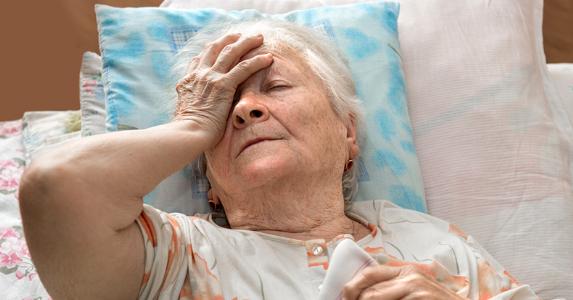
“NO” to Growing Old in a Retirement Home
How then do my dreams for my dotage add up? Not in a retirement home. I long for an updated version of The Golden Girls, co-existing with other old women in homes that annex one another or sharing a grand old house or smallish apartment building.
We would meet regularly to develop plans for helping ailing members along with planning fun stuff like pot- lucks and movie junkets. We would pool our talents to create programs like art classes and book clubs.
Fortunately shared housing models for old women are already in place—ones that we can draw inspiration from. Outside of Paris is the “Babayagas House.” Babayagas is the Russian word for “witch,” dating back to an era when witch wasn’t pejorative but referred to a wise woman.
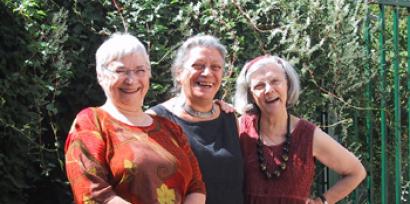
“YES” to Living Out My Dotage With Cool Older Women Like the Babayagas
It took the Babayagas 15 persistent years of endless meetings with local authorities and architects before they were able to put up roots in the Babayagas House. This five-story apartment building just outside of Paris contains 21 units at affordable rates, close to the metro, shops and cinema.
To quote one of the Babayagas: “Growing old is not an illness. We want to change the way people see old age and that means learning to live differently.”
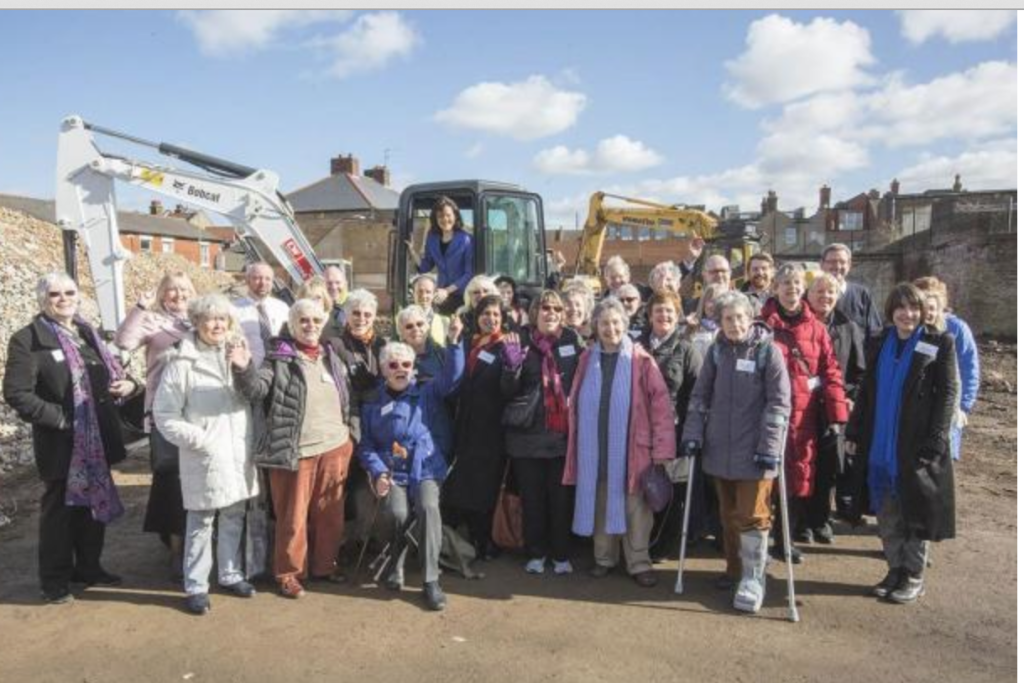
OWCH Women Breaking Ground for their Cooperative Housing Project
Across the channel in Northern London another group of independent, determined old women is about to have their vision of shared housing realized. This project known as OWCH or Older Women’s Co-Housing will open this spring after ten years of planning, offering 17 flats for sale and 8 for rent, including low income units. Each flat has its own separate entrance that opens onto a common green area. As with the Babayagas, OWCH is close to public transportation, amenities, and cultural offerings.
The OWCH philosophy centers on creating a “mutually supportive environment,” where most of the women knew one another prior to purchasing a unit. Their thinking is that you “grow the community first,” rather than put up a building and hope those who move in will get along.
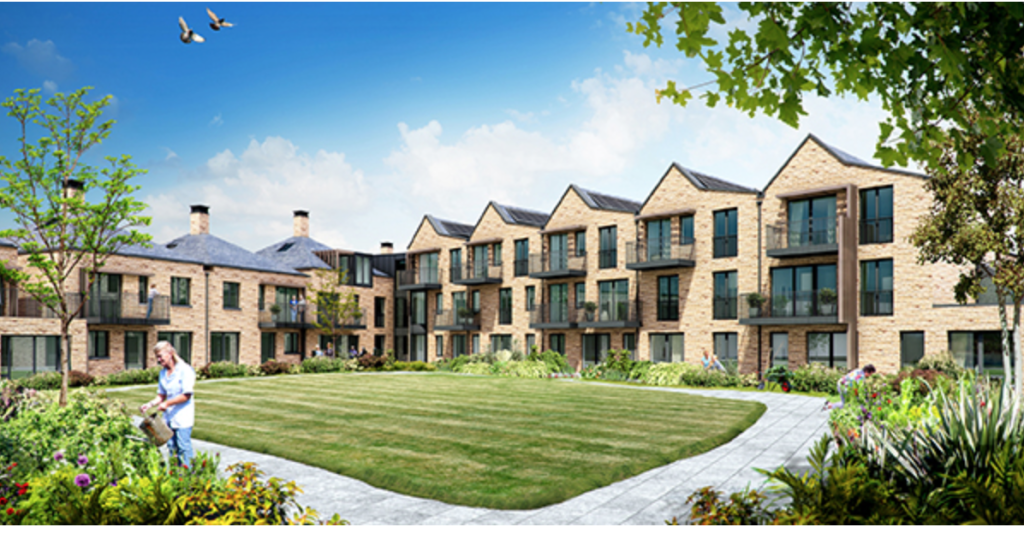
An Architect’s Rendering of the OWCH Project
A group of older Canadian women are in the process of drafting their version of shared housing, calling it “Radical Rest Homes.” One of their intentions is to live differently from their parents, whom they regard as having been passively placed in retirement homes and stripped of their autonomy. Like their French and English counterparts the Canadian women want an active role in shaping their final years.
Where are the American models of shared housing for older women?
They seem to be limited to women sharing single-family homes with three or four women under one roof as opposed to the larger models of Western Europe and Scandinavia. According to a 2012 census the percentage of American women over 60 is at the highest level in our history; this number is projected to keep rising.
I’m reminded of the old adage, “If you can dream it, you can do it.” Who wants to dream and plan with me?
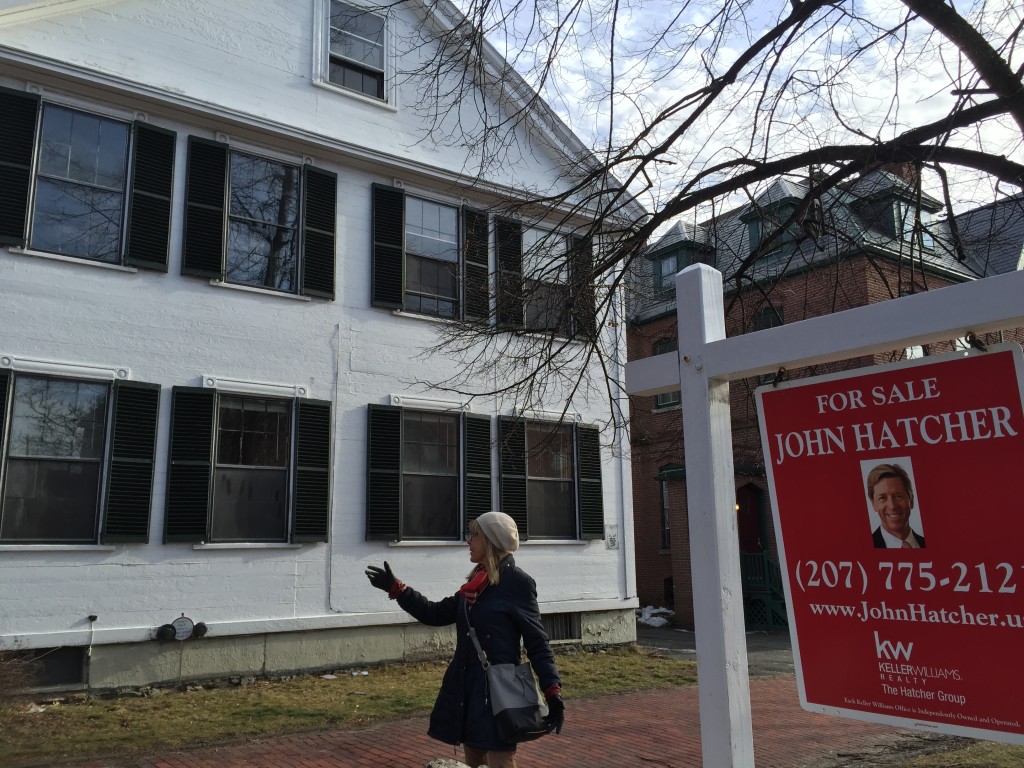
Dreaming of Converting this Grand Old Home into Shared Housing for Older Women